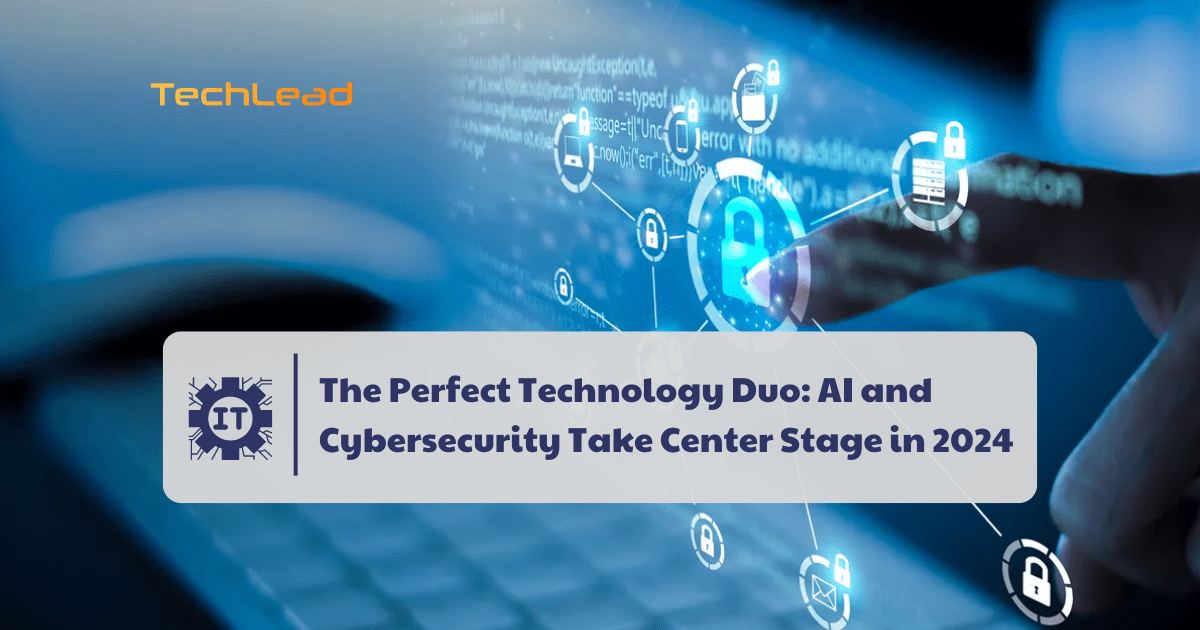Over the past decade, artificial intelligence (AI) and cybersecurity have become two solid pillars driving global technological development. In this article, we will delve into the relationship The Perfect Technology Duo: AI and Cybersecurity Take Center Stage in 2024.
The Development of AI and Cybersecurity
1. Advances in AI
Advances in AI (Collection)
Artificial intelligence has undergone an impressive journey of development, from the basic concepts of the 1950s to the present with complex applications in various fields. AI technologies such as machine learning, deep learning, and natural language processing (NLP) have brought significant breakthroughs.
Machine Learning and Deep Learning
Machine Learning and Deep Learning (Collection)
These two techniques have become the foundation for many modern AI applications. Machine learning allows computers to learn from data and make predictions or decisions without detailed programming for each scenario. Deep learning, a branch of machine learning, uses multi-layer neural networks to process data and recognize complex patterns. Thanks to deep learning, AI can perform tasks like image recognition, text classification, and even play games with superior performance.
Natural Language Processing
Natural Language Processing (Collection)
NLP helps computers understand and interact with humans in natural language. Virtual assistants like Siri, Alexa, and Google Assistant all use NLP to understand user commands and respond appropriately. NLP is also applied in machine translation, sentiment analysis, and many other applications, providing a friendly and efficient user experience.
2. Advances in Cybersecurity
Advances in Cybersecurity (Collection)
Cybersecurity has become an indispensable field in protecting the digital data and information of individuals, organizations, and nations. With the increase in cyber threats, from viruses, malware to advanced persistent threats (APTs), the demand for advanced cybersecurity solutions is increasingly urgent.
Threat Detection
Modern cybersecurity systems can detect and prevent attacks in real-time. Using complex algorithms and AI, these systems can analyze network traffic, detect abnormal behaviors, and alert administrators of potential risks.
Data Encryption
Encryption is one of the most important data protection measures, ensuring that sensitive information is not accessed illegally. Strong encryption protocols like AES (Advanced Encryption Standard) and RSA (Rivest-Shamir-Adleman) are widely applied to protect data during transmission and storage.
Access Control Management
Controlling access rights is an important part of cybersecurity. Identity and access management (IAM) systems ensure that only authorized users can access critical resources.
The Symbiotic Relationship Between AI and Cybersecurity
1. AI Supports Cybersecurity
AI plays an important role in enhancing the efficiency and responsiveness of cybersecurity systems. Advances in AI help improve the detection, response, and forecasting of cyber threats.
Big Data Analysis
Big Data Analysis (Collection)
AI can analyze vast amounts of data from network activities to detect abnormal patterns. Machine learning systems can learn from past behaviors to identify and warn of potential attacks. For example, AI can detect a sudden increase in traffic, which may indicate a DDoS attack in progress.
Automated Response
Automated Response (Collection)
When a threat is detected, AI-based cybersecurity systems can automatically deploy preventive measures. For instance, if a compromised device is detected, the system can automatically isolate the device from the network to prevent malware spread.
Threat Prediction
AI can analyze historical data to predict future threats. For example, AI can analyze past attacks to identify patterns and trends, thereby predicting new types of attacks and suggesting preventive measures.
2. Cybersecurity Supports AI
Conversely, cybersecurity also plays a crucial role in protecting AI systems. Ensuring the security of AI systems helps maintain their integrity and effectiveness.
Training Data Protection
Data is the foundation of any AI system. Protecting training data from cyber attacks is crucial to ensure that AI models are not affected by altered or fake data. If training data is compromised, AI models may become biased or produce incorrect results.
Model Integrity Assurance
AI models can become targets of adversarial attacks, where attackers alter input data to deceive AI systems. Cybersecurity helps protect AI models from these attacks by implementing measures like data integrity checks and using adversarial machine learning techniques.
Access Control Management
Controlling access to AI systems is vital to ensure that only authorized users can access and adjust AI models. This helps prevent internal risks and ensures the security of AI systems.
Specific Applications of AI in Cybersecurity
Specific Applications of AI in Cybersecurity (Collection)
1. Fraud Detection
One of the standout applications of AI in cybersecurity is fraud detection. AI can analyze financial transactions and detect abnormal patterns, helping prevent fraudulent activities. For instance, in the banking sector, AI can monitor millions of transactions daily and detect fraudulent activities in real-time. AI systems use machine learning to learn from previous fraud patterns and improve the detection of new fraud cases.
2. Protection Against Phishing Attacks
Phishing is one of the most common forms of cyber attack, where attackers trick users into providing sensitive information by impersonating legitimate websites or emails. AI can analyze email content and detect signs of phishing, helping prevent these attacks before users are deceived. AI systems use natural language processing to analyze context and detect phishing patterns, thereby alerting users.
3. Network Security Enhancement
AI can monitor and analyze network traffic in real-time, detecting abnormal behaviors that may indicate a cyber attack. These systems can learn from previous attacks to improve the ability to detect and respond to new threats. For example, AI can detect a sudden increase in traffic, which may indicate a DDoS attack in progress. AI can also analyze security events and provide automated solutions to prevent attacks.
4. Personal Data Protection
AI also plays an important role in protecting personal data. AI-based cybersecurity systems can monitor and protect sensitive data from attacks and unauthorized access. For instance, in the healthcare sector, AI can protect patient data from cyber attacks, ensuring their medical information is always secure. AI can also analyze security events and provide automated solutions to prevent attacks.
Challenges and the Future
1. Challenges
Challenges (Collection)
Despite AI and cybersecurity becoming increasingly refined and effective, there are still many challenges to face:
- Complexity: AI and cybersecurity systems are becoming increasingly complex, requiring significant investment in technology and human resources to develop and maintain. Implementing and managing these systems requires deep knowledge and high skills.
- Adversarial Attacks: Adversarial attacks remain a major challenge, where attackers alter inputs to deceive AI systems. These attacks can reduce the effectiveness of AI systems and cause serious consequences.
- Data Management: Protecting training data and ensuring its integrity is crucial to maintaining the effectiveness of AI systems. Attacks on training data can distort AI models and cause serious problems.
2. The Future
The Future (Collection)
In the future, we can expect increasingly close collaboration between AI and cybersecurity, with many advancements and improvements:
- Self-Learning AI: AI systems with the ability to self-learn and improve will become more common, enhancing the ability to detect and respond to cyber threats. Self-learning AI systems will be able to adjust and improve their performance without human intervention.
- Comprehensive Integration: AI and cybersecurity will be more deeply integrated into business systems and processes, helping to protect data and information comprehensively. Integrated solutions will bring higher efficiency and minimize security risks.
- Development of New Tools: New tools and solutions will continue to be developed to deal with increasingly sophisticated and complex cyber threats. These tools will use AI to analyze and respond to threats quickly and effectively.
Conclusion
AI and cybersecurity are two increasingly intertwined technology fields, forming a perfect duo to address challenges and threats in the digital world. The development of AI has brought new opportunities in enhancing the efficiency and responsiveness of cybersecurity systems, while cybersecurity helps protect AI systems from increasingly sophisticated threats.
In the future, we can expect increasingly close collaboration between AI and cybersecurity, with many advancements and improvements to protect digital information and data. Both fields will continue to play an important role in protecting and developing digital systems, creating a safer and more efficient digital environment.





